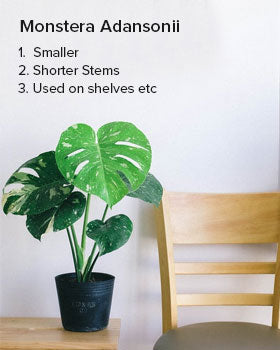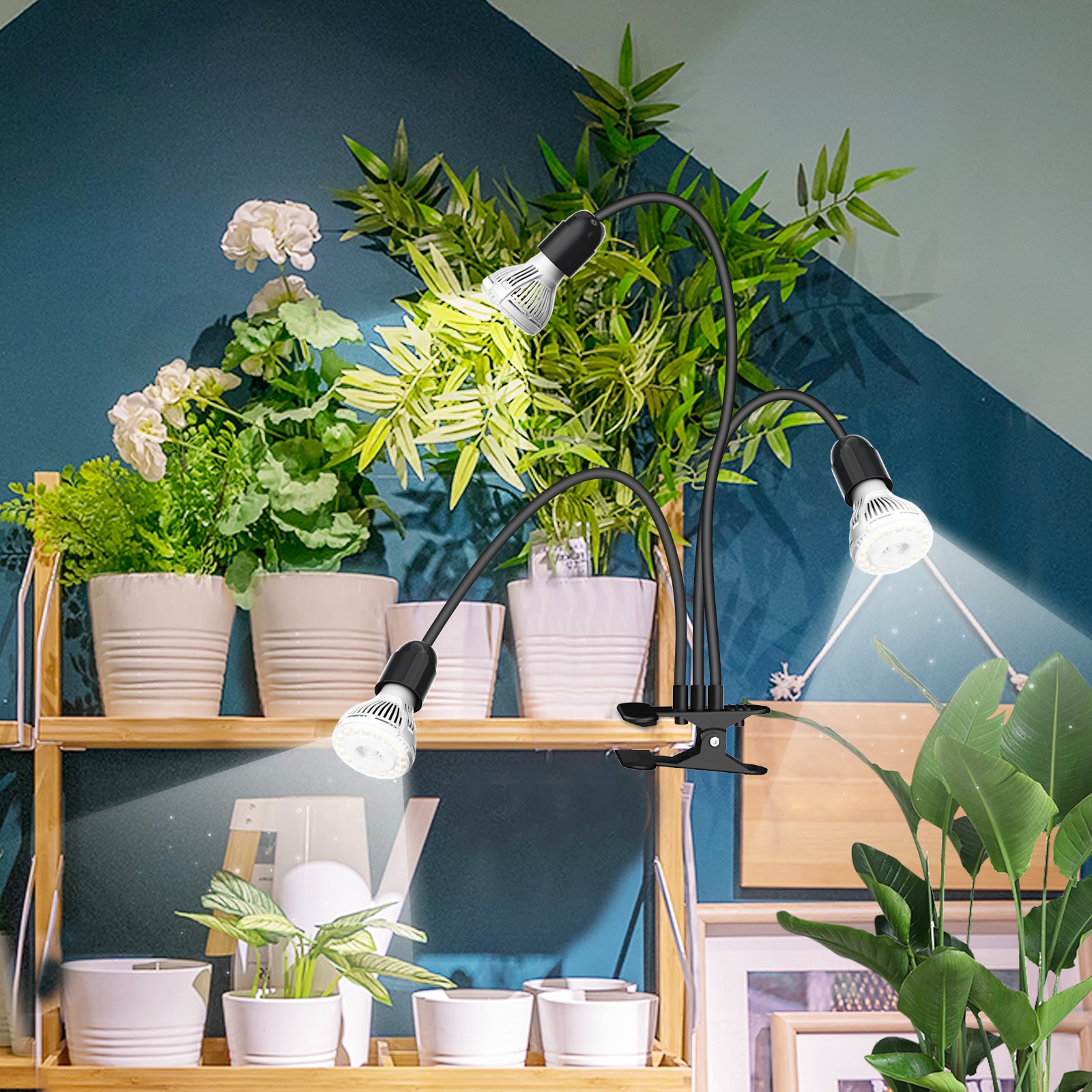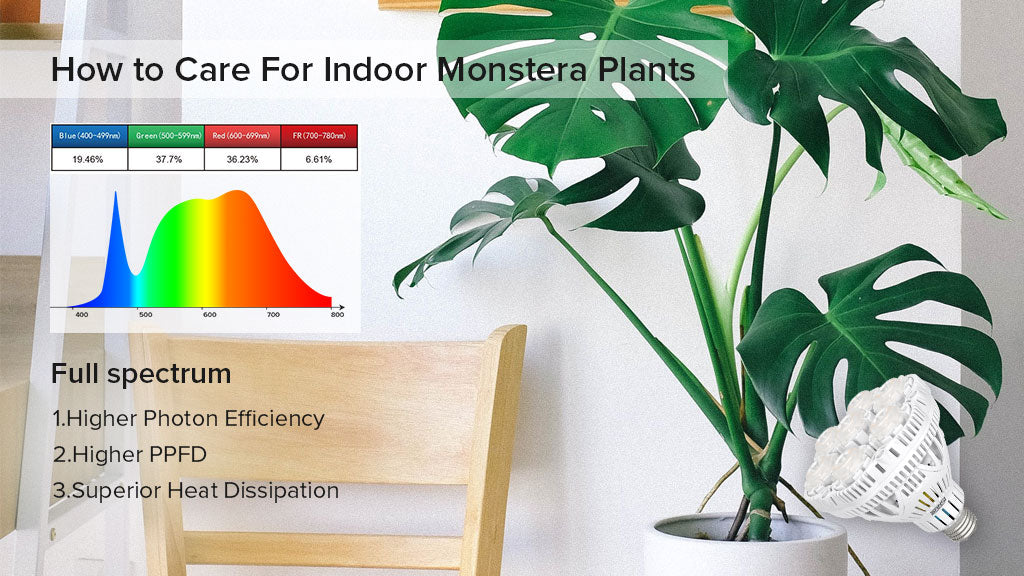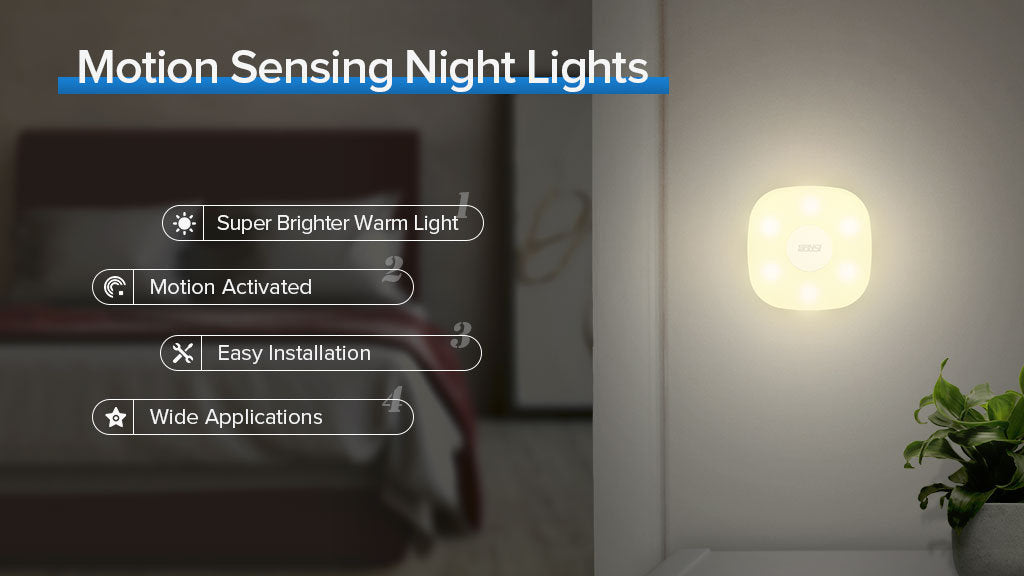
Monstera is a unique looking tropical houseplant that has is highly popular among indoor gardeners. Due to their unique look and large leaf size, they do go by another nickname such as the Swiss cheese plant. This is because of their leaves structure. Monstera’s leaves have large surface areas and open holes (fenestrations). These fenestrations are critical in their natural tropical habitat where plants and especially the lower leaves are struggling for sunlight. This is why the leaves of the monstera have holes, in order to share more light to the lower section of the plant. The Monstera’s open leaf structure is what makes it so efficient with the use of sunlight, as well as making it popular with indoor gardeners. Monstera’s are one of the most popular indoor houseplants and just flicking through Instagram you will see thousands of homes filled with them. However, due to their tropical demands, what is the best way to care for them?
What Are Monstera Plants? Different species Different Requirements?

There are multiple variations of the monstera plant but the two most popular types of Monstera are Monstera Adansonii and Monstera Deliciosa. What is the difference between these two variations? Monstera Deliciosa is a very large tall plant that can be plant potted and stood up in a room. They take up a lot of space with their large leaves and wingspan.

Monstera Adasonii, is a much shorter stemmed plant just reaching over their pot. These are more used on cupboards, shelves, as smaller decorative green plants for around the home. In terms of watering and lighting requirements, all Monstera plants have long vines and require a lot of light. There would be two optimal ways in lighting these plants, with indirect or filtered light or controlled direct sunlight. Whether the source of light is natural or artificial, the two lighting approaches would still be the same.

Monstera Environment
With indoor growing we’re generally trying to recreate the plant’s natural habitat. The 4 main areas in replicating a plant’s natural habitat would be light, water, soil and humidity.

Watering & Soil
What is the best way to water a Monstera? When 50% of the top soil Is dry, you can water them. Every 1-2 weeks should be enough as the plants like humid environments too. The soil can be general garden soil. Moist, but well drained soil with a range of 5.5-6.5 PH.

Humidity
In terms of humidity a normal room, the plant will adapt however they do prefer higher humidity environments. If you do have a humidifier, this would replicate the plants natural environment better.

Temperature
Room temperature would be okay for such a plant anywhere between 18-30°C would be more than comfortable for the plant. Just make sure to never really let the temperature drop below 15°C, or the plant may start to run into some issues.

How Much Light Do Monstera’s Need?
Sunlight requirements for these plants can get specific. Too much direct light and the leaves will burn. Leave them in darkness, the plant won’t grow. Monstera’s need a balanced amount of controlled lighting. Whether this is natural or artificial. The easiest way to regulate the amount of light the plant is getting indoors is to use an indoor grow light. This is because indoor grow bulbs can be controlled, timed and customized to whatever your plant needs.
Monstera’s in their natural tropical habitat do get plenty of light, 8-10 hours, most days. However, due to them usually being lower down and covered by the canopy of larger plants, they are not used to direct intense sunlight. But indirect or well controlled sunlight will help them thrive! When defining indirect, especially when it comes to artificial light that is controlled it can be slightly different. This can just be moving the light at a further distance away from the plant. Adding a filter over the lens of the light if you do want them to be close or buying an indoor grow light with a lower output.
How to Know If A Monstera is Getting Too Much Light?
Monstera’s tell a lot through their leaves. If you look closely at the color and texture of their leaves, they should be a good indicator of what is happening to your plant. Signs of the plant getting too much light are:
- Yellow or brown leaves
- Leck of fenestrations (holes in leaf)
- Spindly growth
It is also important to remember that younger plants will have slightly longer light exposure in comparison to developed plants. More developed Monstera’s can tolerate lower light levels.
What is The Best Way to Light a Monstera?
Using indoor artificial light is one of the safest most controllable ways to light any indoor plant. Monsteras would be no different. Due to the fact these plants are at a higher risk of burning, suffering from too much light exposure and are from a tropical environment, their conditions are better off being methodologically controlled. When it comes to caring for a monstera the temperature, light, humidity are all variables, in order to reduce each variable’s impact, it is better to be able to control it as best as possible. An indoor grow light allows you to set the distance, the time, the light spectrum, when supplementing your indoor Monstera.

A Cost-Effective Indoor Grow Light
SANSI’s 36W indoor grow light provides bright natural daylight. In terms of design, heat dissipation and overall light spectrum, this grow bulb is one of the most effective indoor grow lights on the market. The combination of a hollow body and ceramic heat sinks, allows for the light to remove heat away from the chips on the front of the light. Reducing heat and light decay. The beam is full spectrum and has a balanced blue: red ratio, promoting even growth throughout the whole plant. Overall, this light is fantastic for small and medium scale grows, that are applied within offices, homes and indoor farms. These bulbs can be used to illuminate 1 square foot of plans due to their wattage and light output. As you add more plants you can simply just scale up and add more bulbs! Their smaller size and large light output, makes them adaptable for multiple indoor grows.
Monstera’s need care and time, SANSI’s 36W light is built for time and promotes healthier grows. Let them light up your plants!
If you want to strengthen your plants growth, then head over to SANSI 36W grow light bulb.





Leave a comment
All comments are moderated before being published.
This site is protected by hCaptcha and the hCaptcha Privacy Policy and Terms of Service apply.